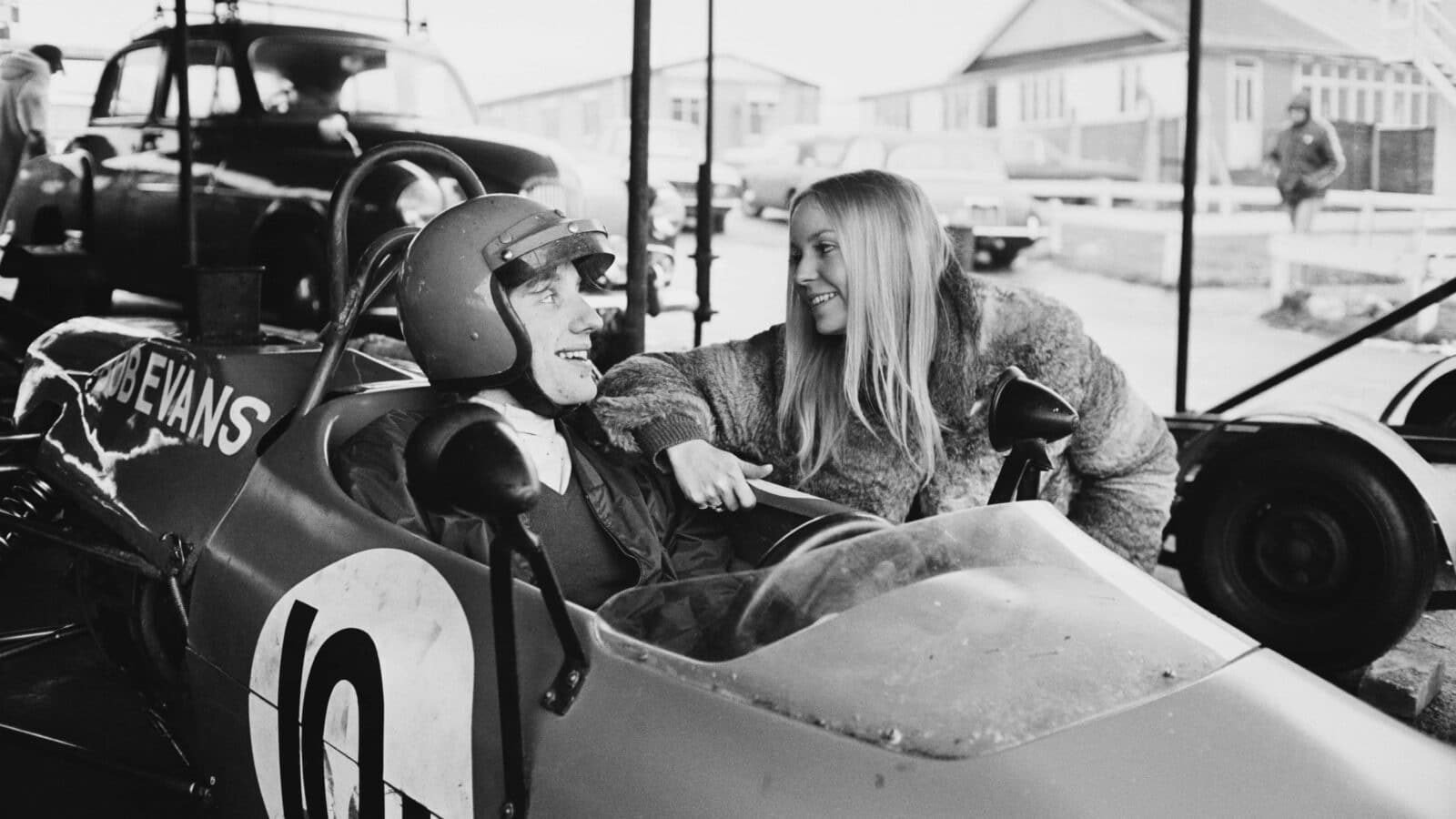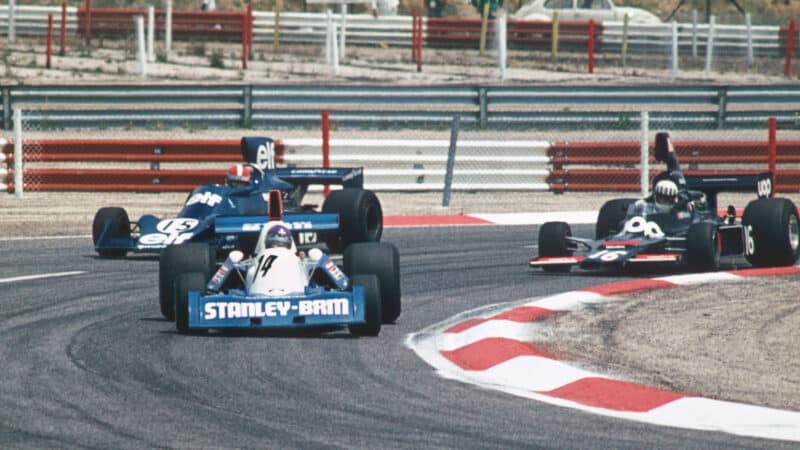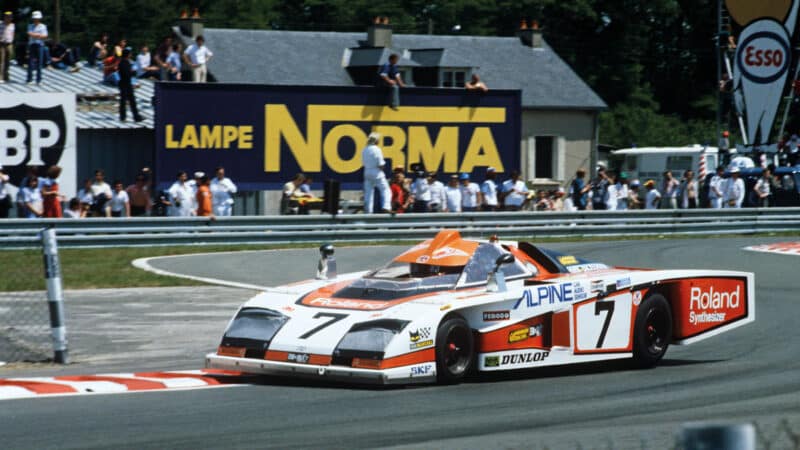Smile and the world smiles with you
Racing drivers can take themselves too seriously but there are no such problems in Bob Evans’ autobiography, says Gordon Cruickshank

Supportive wife Annie – here with Evans at Brands in 1969
Getty Images
There’s a cheerful title for you – the same tone that pervades this fun softback. Bob Evans touched the hem of Formula 1, gaining a brief Lotus drive in 1977 that came to nothing, but bitterness and frustration are completely absent from this memoir. In his introduction Evans says he’d been reading another driver’s memoir which seemed “fairly miserable to me despite the fact that he made world champion and had a distinguished career”. He goes on to say that he just remembers how lucky he was to live this extraordinary life. A refreshing approach that makes you think, “I might enjoy this.” I did, too.

Nul points for BRM’s Bob Evans in the 1975 French Grand Prix
Getty Images
Evans did it all the hard way, as one chapter heading says “scratching a living” in garages and accessory shops (can you believe there was a Les Leston shop on Kings Road?), then buying a cheap Formula Ford and scrabbling his way from race to race around Britain and Europe with other eager hopefuls, and his very supportive wife Annie. There are great photos of this circus on its travels, and tales too – like the lady undressing in the car when it’s unexpectedly valet parked.
That ‘lucky’ element keeps popping up – joining Alan McKechnie’s small team brought him F3 and then F5000 seats, and he serves up cheery lines like, “We had acquired a March 733 – not sure how,” as he battles up the staircase to win the 1974 Rothmans F5000 championship, finally getting noticed by people who mattered.
Unfortunately it was BRM’s Louis Stanley who pounced first, in his typically highhanded way announcing Evans’ signing before he told Evans – and before Evans discovered that “the now thin veneer of this honourable team had been well and truly trashed by Stanley”, adding that though they gave their best, “the BRM crew were beaten men from the start”. Though the P201 was outdated – a ninth his top score – Colin Chapman gave him a testing contract for 1976 but in truth it was a stopgap measure coinciding with one of the team’s periodic slumps. A grand prix retirement and a tenth in South Africa rounded out his Lotus stint. But, he says wryly, “Maybe I was lucky. I lived to tell the tale.”

Evans shared driving duties of this Dome Zero with Tony Trimmer at Le Mans in 1979
Getty Images
Not only did Evans survive, he managed some sports car racing in Japan and at Le Mans as well as a final F1 season in the Aurora series. He’s funny about his Le Mans run in the Dome Zero and the Japanese team’s manual: “If you lose a wheel on the track: one, find the wheel; two, reattach the wheel; three, drive slowly back to the pits.”
That’s why you enjoy this book – not for plain facts about an unfulfilled talent but for the memories: why he stripped off on the Brands Hatch grid in front of the grandstand, the edgy Mosley heckle at the GPDA driver stand-off at Montjuich in ’75 or his description of “strutting, opinionated” Lotus manager Peter Warr as “the Jacob Rees-Mogg of F1”.
He laments that he can’t remember his past as well as the cricketers on Test Match Special, yet as he explains his sneaky braking technique into Druids, or what Prince Philip said to ‘Big Lou’ that for once shut that pompous bore up, as well as describing many races, his memories seem clear, and rich.
Even though his career involved some nasty smashes, close to paralysis in one case, that’s not what colours this memoir. It’s the enjoyment and camaraderie, plus the noise and smell of 5-litre Chevrolets barrelling into Paddock Hill bend that make Bob Evans’ racing recollections so upbeat.

Happy Lucky Days
Bob Evans
BHP Publishing, £32
ISBN 9781738508501

